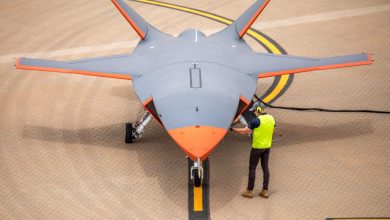China develops new version of “Guam Killer” missile

A new version of China’s DF-26 ballistic missile system has been spotted during rehearsals for an upcoming military parade in Beijing.
The DF-26, officially known as Dong Feng-26 and designated by NATO as CH-SS-18, is an intermediate-range ballistic missile operated by the People’s Liberation Army Rocket Force. It is produced by the China Aerospace Science and Technology Corporation (CASC). Chinese sources claim the missile has a range of more than 5,000 kilometers, or about 3,100 miles, and can carry out precision nuclear or conventional strikes against both ground and naval targets.
The DF-26 is regarded as the first conventionally armed ballistic missile that China claims can strike Guam, home to multiple U.S. military installations. Because of this, it has been referred to as the “Guam Express” or “Guam Killer.”
The appearance of the DF-26D variant came as a surprise, with no prior public details released about the system. For many analysts, the unveiling of the updated missile during parade preparations was the first indication that a new modification had entered China’s arsenal.
At present, details about the DF-26D remain limited. However, some assessments suggest the new version may be designed for specialized missions against large maritime targets, including carrier strike groups and major port facilities. Such a capability would align with Beijing’s growing focus on anti-access and area denial strategies in the Indo-Pacific region.
The DF-26 family of missiles has undergone several modifications over the years, incorporating advanced navigation systems as well as decoys and electronic countermeasures. These upgrades are intended to improve survivability against Western missile defense systems, increasing the likelihood of penetrating layered defenses in a conflict scenario.
The reported introduction of the DF-26D underscores China’s continued effort to diversify its missile arsenal with systems capable of striking both regional and long-range targets. While the DF-26 has long been viewed as a dual-capable weapon with both nuclear and conventional roles, the development of a variant optimized for maritime strike missions would further expand its operational versatility.
As of now, Beijing has not issued any official statement regarding the DF-26D or its intended role. The absence of details leaves uncertainty surrounding its capabilities, but the system’s unveiling highlights the pace of Chinese missile modernization and the continued emphasis on challenging U.S. and allied forces in contested waters.





